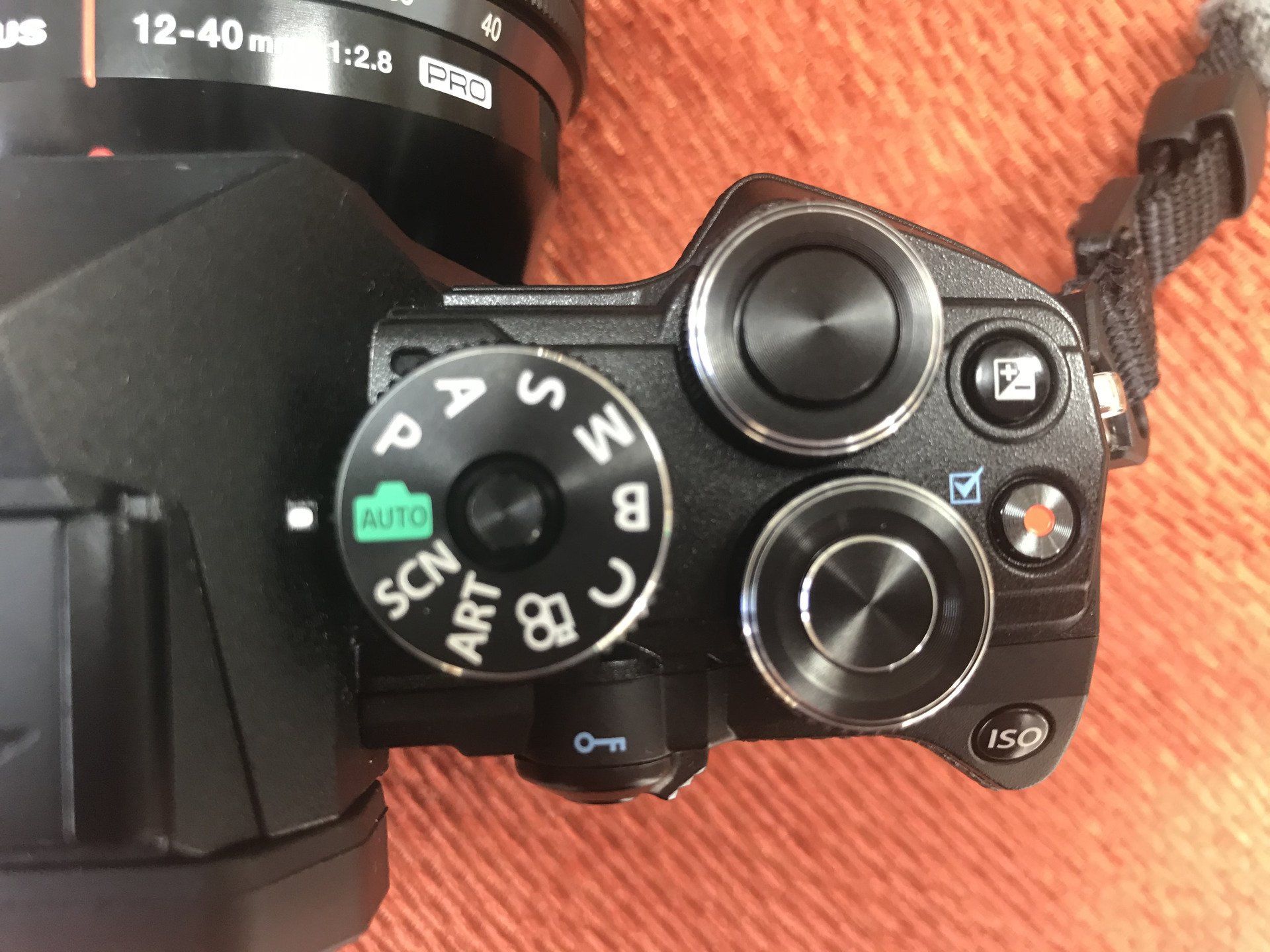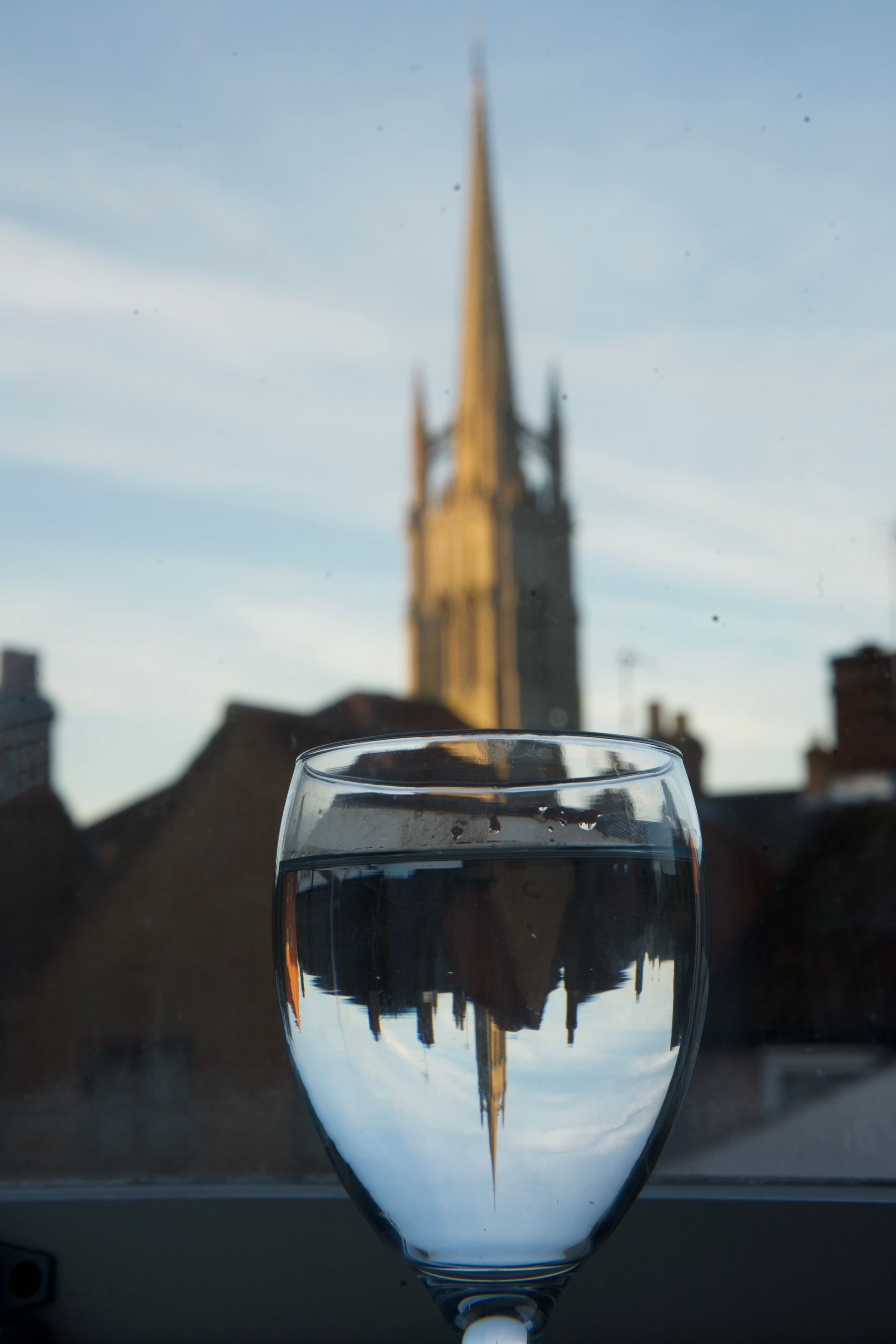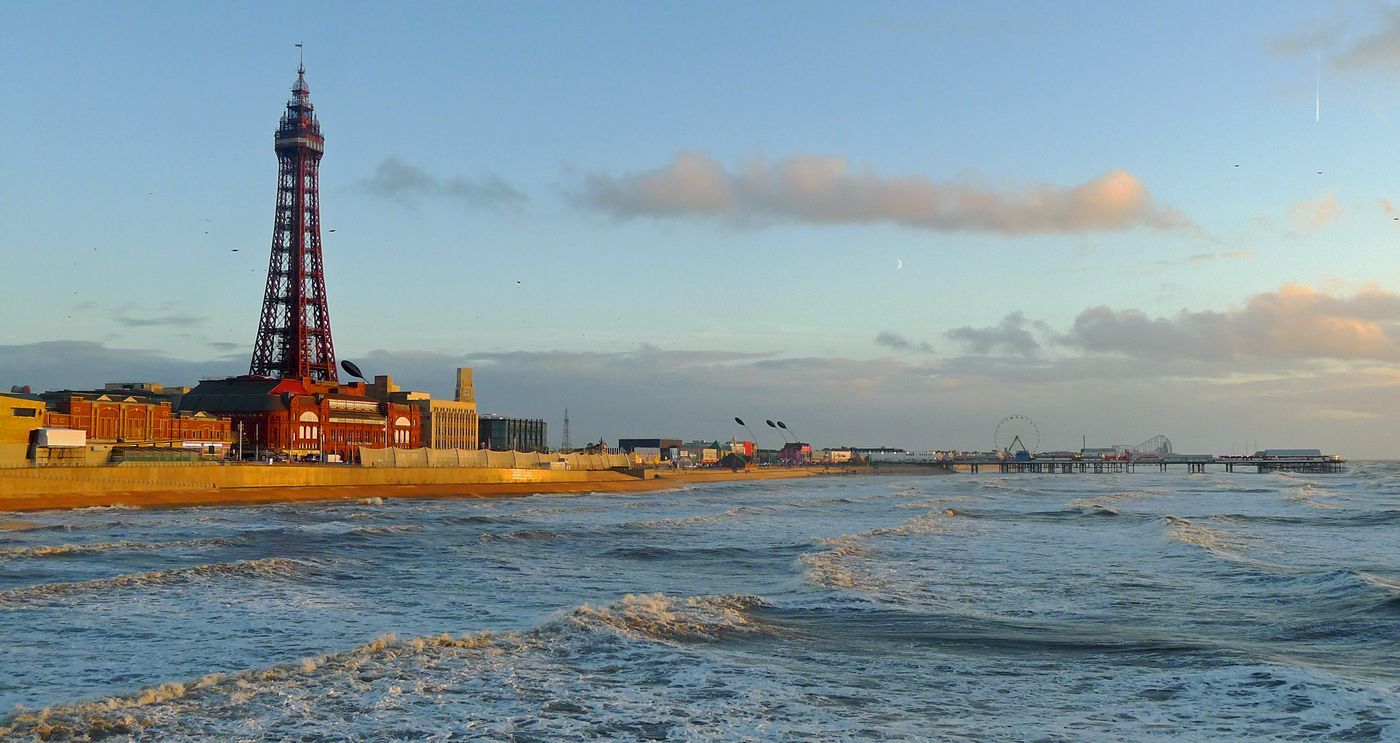Getting out of Auto mode - Picture Perfect
Derek Smith • 14 June 2020

Getting out of full auto mode – picture perfect
Modern day digital cameras have a really powerful processor inside the camera to determine the correct exposure for any given photographic scenario, however the photographs taken on full auto mode may not have the impact, or depth that you as a creative photographer might have desired when you click that shutter.
So, let’s examine the other modes on a digital camera.
Program Mode (P)
In this mode the camera determines the correct exposure by computing the shutter speed, and aperture for a given scene, usefully the photographer is able to control the ISO. In a low light setting the camera may well push the ISO to 1600, or even 6400, resulting in an image that displays a lot of noise in the shadow areas of the image. Lowering the ISO to say 800, will achieve an image with less noise, remember though that in Program mode the shutter speed may well be slowed down, with the possibility of a blurred image by camera shake, or subject movement.
Shutter Priority Mode (S or TV)
This is the best mode for fast moving subjects, trains, boats, cars, motorbikes, aircraft, and any sports. In these situations the subject is the most important part of the image, and the background is unimportant. Choose a shutter speed of say 1/500 to totally “freeze” any action, ensuring a blur free image, slow the shutter speed down to achieve motion blur on wheels, or aircraft propellers. I would recommend setting ISO to Auto ISO, in this way ensuring the shutter speed is set as required, and only the aperture will be controlled by the camera.
Aperture Priority Mode (A or AV)
In this mode the photographer determines how much of the subject is in clear view, and the camera controls shutter speed for the correct exposure. In a landscape scene close, or “stop down” the aperture for a clear, sharp image from a few feet in front of the camera to infinity, a typical aperture would be anything from f/5.6 – f/16, the aperture settings are dependant on camera, lens, and sensor size, and only by experimenting will the correct aperture be found. Aperture priority mode is an ideal setting for portraiture, still life, and flowers. A wedding photographer may well choose an aperture of f/2, to give a sharp portrait of the bride, and groom, whilst achieving a soft blurred background. Again choose Auto ISO if the light is changeable, ensuring the shutter speed is fast enough to exclude motion blur.
Manual Mode (M)
In this mode the photographer has total control over all of the settings, some photographers contend that you should only shoot in Manual mode, personally I disagree, the camera is very capable of computing the correct exposure in Aperture, or Shutter priority modes. I do however use Manual priority mode in controlled situations, a studio for example, where the lighting can be accurately controlled. I use Manual mode in this fashion; firstly, I set the ISO to the base value of 100, or 200 (not low as this is a computed ISO), secondly I adjust the Aperture to suit, usually a fairly wide f/1.2 – f/4 to give the correct depth of field on the subject. Thirdly, adjust the shutter speed to ensure the correct exposure using the inbuilt camera light meter. Where I use an off-camera flash, typically I set the exposure to -2 then adjust the flash power to compensate.
Modern day digital cameras have a really powerful processor inside the camera to determine the correct exposure for any given photographic scenario, however the photographs taken on full auto mode may not have the impact, or depth that you as a creative photographer might have desired when you click that shutter.
So, let’s examine the other modes on a digital camera.
Program Mode (P)
In this mode the camera determines the correct exposure by computing the shutter speed, and aperture for a given scene, usefully the photographer is able to control the ISO. In a low light setting the camera may well push the ISO to 1600, or even 6400, resulting in an image that displays a lot of noise in the shadow areas of the image. Lowering the ISO to say 800, will achieve an image with less noise, remember though that in Program mode the shutter speed may well be slowed down, with the possibility of a blurred image by camera shake, or subject movement.
Shutter Priority Mode (S or TV)
This is the best mode for fast moving subjects, trains, boats, cars, motorbikes, aircraft, and any sports. In these situations the subject is the most important part of the image, and the background is unimportant. Choose a shutter speed of say 1/500 to totally “freeze” any action, ensuring a blur free image, slow the shutter speed down to achieve motion blur on wheels, or aircraft propellers. I would recommend setting ISO to Auto ISO, in this way ensuring the shutter speed is set as required, and only the aperture will be controlled by the camera.
Aperture Priority Mode (A or AV)
In this mode the photographer determines how much of the subject is in clear view, and the camera controls shutter speed for the correct exposure. In a landscape scene close, or “stop down” the aperture for a clear, sharp image from a few feet in front of the camera to infinity, a typical aperture would be anything from f/5.6 – f/16, the aperture settings are dependant on camera, lens, and sensor size, and only by experimenting will the correct aperture be found. Aperture priority mode is an ideal setting for portraiture, still life, and flowers. A wedding photographer may well choose an aperture of f/2, to give a sharp portrait of the bride, and groom, whilst achieving a soft blurred background. Again choose Auto ISO if the light is changeable, ensuring the shutter speed is fast enough to exclude motion blur.
Manual Mode (M)
In this mode the photographer has total control over all of the settings, some photographers contend that you should only shoot in Manual mode, personally I disagree, the camera is very capable of computing the correct exposure in Aperture, or Shutter priority modes. I do however use Manual priority mode in controlled situations, a studio for example, where the lighting can be accurately controlled. I use Manual mode in this fashion; firstly, I set the ISO to the base value of 100, or 200 (not low as this is a computed ISO), secondly I adjust the Aperture to suit, usually a fairly wide f/1.2 – f/4 to give the correct depth of field on the subject. Thirdly, adjust the shutter speed to ensure the correct exposure using the inbuilt camera light meter. Where I use an off-camera flash, typically I set the exposure to -2 then adjust the flash power to compensate.
Stay safe, and enjoy your photography.
Louth Photographic Society

Good Morning, All We did go to the sand racing again last week, the weather was a bit overcast but as no sky is required for this kind of photography, so good action shots are still possible. Last week at the club we held our monthly competition, of prints, with the categories of "People" and "Open". There was a very good entry with some excellent prints. David Whitehouse came first in the People section with Dave Turner winning the Open section. All the results are on our website under competitions with a blog on the evening as well. This week our Christmas buffet and quiz night will be held. The buffet will be provided for you but feel free to bring a drink along with you (a beer or glass of wine if you wish). Dave Mann will also be providing tea and coffee. Tony is doing a quiz for us all so bring a pen and paper if you remember, Christmas jumpers are optional. Harry will be selling raffle tickets, and if you would like to provide a prize please bring it along and give it to Harry. Regards Graham

A print competition was held last night with the categories of “People”, and “Open”. The judge for the evening was Dane Butler, this was his second time judging with us, and he is showing much more confidence in judging at photographic clubs. In the “People” category there was a wide variety of inventive images of people, from solo portrait style, to street, and groups of people, the highest placed print in this category was the “Pride Celebration (Cologne)” taken by David Whitehouse. In the “Open” category Dane had to judge wildlife, portraits, landscape, macro, and architectural prints, I thought he did a superb job, his choice for the top spot was “Cloud Inversion Summit of Snowdon” by Dave Turner. The website Competition page has been updated with the images, and results.

Good Morning All Last week at the club we viewed the Lincolnshire photographic Associations mono group presentation, Dave Turner who goes to the group talked us through the evening with Chris Birchmore and Richard Hildred talking about their photographs. There is a blog on the evening on our website, but inspired by the evening I thought I had better try a few mono photographs myself. This week, Wednesday 10th December, we will hold our monthly print competition, with the categories of "People" and "Open", to be judged by Dane Butler from Dunholme. There are good number of entries so should be a very good competition. The following week, Wednesday 17th December, is our buffet and quiz night, for new members the buffet will be supplied and anyone who would like to donate a raffle prize please give it to Harry. The evening is for members only. Regards Graham

Last night members were treated to a showing of the LPA (Lincolnshire Photographic Association) Mono Group presentation. Three of our members, Dave Turner, Richard Hildred, and Chris Birchmore are members of the LPA Mono Group. Dave Turner excellently presented this showcase of the Mono Groups work, many of the images presented were stunning, and inspirational. A simple photo of a padlock on a gate took on a different dimension when presented in monochrome, and landscape photography becomes dramatic in monochrome, especially with a moody sky. It was a very interesting, and well attended evening. Thank you to Dave Turner for presenting, and Dave Mann for the refreshments.

Good Morning All Last week at the club we held a committee meeting, with all committee members in attendance. Harry will once again run the Christmas raffle on our buffet and quiz night, if any member wants to donate a prize, Harry can now accept them, obviously if it's a perishable prize then bringing it in on the night would be better. We are holding a 70th anniversary exhibition next year at the Louth Museum, if any member has local prints that they think may be suitable to put in the exhibition you can bring them to the club any time now. Derek has done a blog on the night with more information. This week, Wednesday 3rd December, we are viewing the LPA mono groups presentation, Dave Turner is a member of the group and will talk us through what the group do and if time allows show us some of his own mono prints. Don't forget to bring your prints along this week for the print competition, with the categories "People" and "Open", to be held the following week, email your titles to Dave Turner in advance please. Regards Graham

We held a Committee meeting last night in place of a regular meeting. The Committee meets twice a year to discuss items pertinent to effective, and smooth running of our Society. The Society celebrates 70 years of continuous operation next year, and we intend to show an exhibition of photographs taken over those years at the Louth Museum. The LPA Battles print competition will be held next year, and consists of 3 rounds held at photographic clubs throughout Lincolnshire, with a final round held at Nettleham. Louth has been drawn to meet with camera clubs in Grantham, and Axholme, and as you can understand this will entail a far amount of travelling. There is a proposal to the LPA which is currently under consideration which would reduce each club entry to 10 prints and for the whole competition to be held at Nettleham in 2027. Our current annual project is “Prime Time”, that is one photo for each month of the year taken with a fixed focal length lens, a prime lens, my choice for this year has been a 45mm lens, which is a full frame 90mm lens. Members show their annual project photos in the January of the following year. The Committee has decided on the project theme for next year as “Water”, which should give members a chance to demonstrate some creativity, as can be seen from the attached image. Our Christmas social event will be held on the 17th December, a buffet will be provided, there will be a quiz, and a raffle, the door entry charge will be £3 for the evening.

Good Morning All Last week at the club we held our PDI of the year, it was a well-attended event and thanks to Harry's organisation skills it all ran very well. Congratulations go to all the subject winners: Pictorial, Harry Kerman, Record, Dave Evans, Portrait, Derek Smith, Photojournalism, David Evans, Landscape, Dave Turner and Natural History, Graham Harrison. The overall winner was Harry Kerman. Well done Harry a great photograph of a White Cosmos. All the top three in each subject are on our website Competition page. Don't forget if you are entering the December print competition, with the categories of "People" and "Open" send your titles to Dave Turner please. The prints need bringing in a week on Wednesday. This week, Wednesday 26th November, we are holding a committee meeting, committee members only for this one please. For newer members we hold two committee meetings a year to organise events and the smooth running of the club. Regards Graham

Last night we held our PDIOTY (PDI of the Year) competition, our judge for the evening was Jorg Malinowski. These annual competitions are an opportunity for members to showcase their best images from the year, some of course from the monthly competitions, as such the competition entries were of an extremely high standard. Jorg performed an excellent job of judging the entries, and the results are all on the website Competition page. Congratulations to Harry Kerman for gaining the title of PDI of the Year with his White Cosmos image.

Good Morning All While we were away the other week we did have a walk around Blackpool. I only took my compact camera which I bought in 2011 but it still works ok and takes decent photographs. It is a Panasonic LX5 which fits in a pocket and is useful now and again. Last week we had mini lectures; photographs we had taken on this year's outings. Four members took part with Richard Hildred filling in with wedding photography from forty odd years ago, a very interesting look at how Richard went about photographing weddings, very different from today with far less photographs been taken. The outings did show we managed to photograph insects and birds on our walks around Red Hill and Rimac. I finished the evening with photographs taken in Somerset and Devon in 2020. This week, Wednesday 19th November, we hold our PDIOTY (PDI of the year) to be judged by Jorj Malinowski of Lincoln. It will be an evening of our best photography and we have just over fifty entries. The NEMPF exhibition acceptances have now been decided, well done to Dave Turner who had two accepted and I managed one acceptance myself. The standard for acceptance is very high, we had four members enter twenty nine PDI'S all together and only three acceptances . We had a lot of near misses, the score required was twelve and we had twelve elevens between us. You will see the exhibition at our club next year. Regards Graham

At our meeting last night members gave a series of mini lectures with 3 members showing images from the club outings to Red Hill, and Rimac. The meeting was completed by Richard Hildred showing some of his early slides. One of the principles of our Society is that we feature workshops, and outings into our annual programme, because the best way to learn photography is to work with other photographers to understand aperture, shutter speed, and ISO. In June at the Red Hill nature reserve the idea was to capture some macro images of the local insect life, and the orchids at this location. Laying, or kneeling in the grass to get close to the insects, or flowers, our members would begin to understand depth of field with using different apertures, each photographer will have his own method of achieving optimum exposure, and sharpness. Personally I tend to use aperture priority mode (A or Av on the mode dial), auto focus, and “rock” gently back and forwards to gain the focus on the subject. At Rimac, members had a lot more latitude to photograph some bird-life, or landscapes. These are some sample images from the Red Hill, and Rimac nature reserves.
